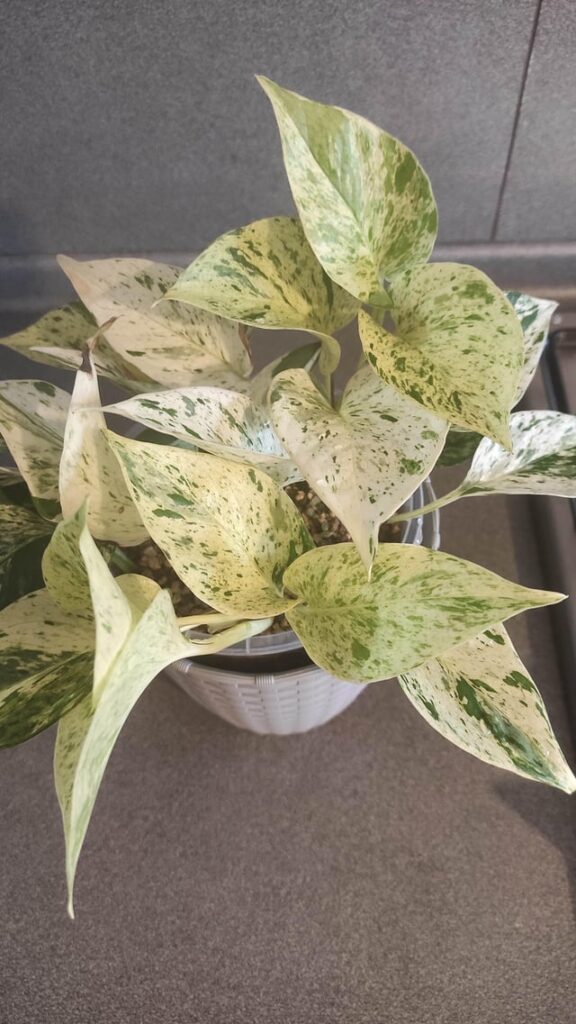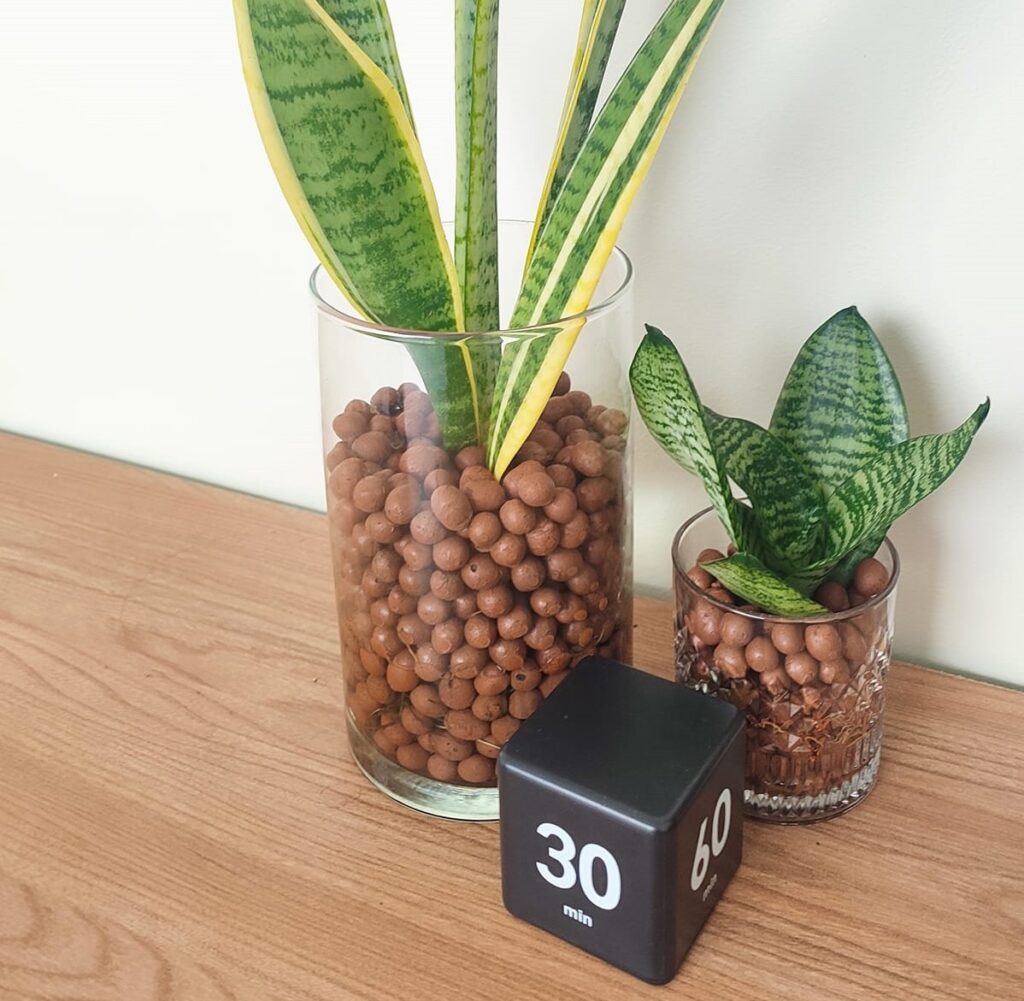So you’ve taken the plunge and moved some of your plants into a semi-hydroponic setup (LECA or Pon). Awesome! But what comes next? How do you make sure your plants not only survive but thrive in their new home? Don’t worry, we’ve got you covered.
From the crucial first month to long-term care, here’s your go-to guide for semi-hydroponic plant care.
Summary
Semi-Hydroponics Plant Care Guide
- The First Month is Key: Keep a close eye on your plants. You’re aiming for a smooth transition from soil to water roots.
- Water-Air Balance: Different plants have different needs. Some like to stay moist, while others prefer to dry out a bit.
- Root Watch: Use a clear pot to monitor root growth. Once water roots appear, feel free to switch to a fancier pot.
- Extra Tips: Use treatments like Physan 20 to prevent root rot and flush the LECA/Pon regularly to keep things clean.
- Long-Term Care: Once settled, caring for your plant becomes a breeze. Just keep an eye on water and nutrient levels, and you’re good to go!
Semi-Hydroponics Plant Care: The First Month
The initial 2 to 4 weeks are crucial. Your main job? Watch your plant like a hawk and tweak things as needed.
The Water-Air Balance
Every plant has its own water and air needs. For instance, Hoyas prefer to dry out a bit between waterings, while Calatheas are okay with staying moist.
Soil Roots vs. Water Roots
When you first switch a plant to semi-hydroponics, it’ll probably have soil roots.
Your aim is to make the plant comfy enough to start growing water roots.
These two root types handle water and air differently. Water roots can pull oxygen from water, but soil roots aren’t as good at this.
Your mission? Help your plant find the right balance of air and water. This will encourage it to grow water roots, which will eventually replace the soil roots. Some plants might even adapt their soil roots to the new, moist environment.
How to balance things
- Water Reservoir: Fill about a quarter or a third of the container with LECA or Pon. This lets the plant drink as much as it needs.
- No Reservoir: Let the roots dry out to mimic natural wet and dry cycles. This encourages root growth.
- Scheduled Watering: Splash some water on your plant now and then. This usually pairs well with the no-reservoir method, giving the plant a quick drink that dries up in a few days.
- Root Watch: Use a clear pot during the transition. This way, you can see how the roots are doing. Once water roots appear, you can switch to a fancier pot. Pro tip: Place the clear pot inside a darker one. Roots like the dark.
Extra Tips for a Smooth Transition
- Flushing: Run clean water through the LECA/Pon to get rid of any leftover soil and give the plant a good drink. This is basically the scheduled watering method.
- Physan 20: This all-in-one treatment fights off fungi, bacteria, algae, and viruses. It’s great for preventing root rot, especially during the transition from soil to water roots.
By keeping an eye on the water-air balance and using these extra tips, you’ll set your plant up for a successful semi-hydroponic life.
Read more: How to transfer Plants from Soil to LECA

Case Study 1: Monstera Albo
When I first got this Monstera, it had 5 leaves, but two were yellowing—probably from the shipping stress. I let it chill on a heat mat in some loose sphagnum moss. After two weeks, the yellow leaves fell off, and I moved the plant to a semi-hydro setup with LECA/Pon.
Guess what? When I took off the moss, new white roots were sprouting. The heat mat must’ve done wonders.
Monsteras like wet roots, so I used Hydroton LECA, which holds moisture well.
I filled the jar with a mix of filtered water, seaweed extract, and Superthrive, up to a level just below the white root. A week later, the water was gone, and a new fuzzy root had grown to the bottom of the jar.
The Monstera was already in a root-growing phase when I switched it to LECA. Perfect timing! Monsteras love moisture and adapted quickly, as seen by the new leaf and water root growth.
I can either keep using the Seaweed extract water or switch to a nutrient solution. Either way, the plant is happy and adapting well.

Case Study 2: The Pothos Experiment
I tried an experiment with pothos, using LECA and a water reservoir. I trimmed the roots on some pieces and left others as is. Sadly, the plants wilted and died within 12 days.
What Happened?
My guess? Pothos needs a lot of moisture to grow water roots. The soil roots didn’t adapt well, and no water roots formed. Oddly, pothos usually grows water roots quickly when placed directly in water.
Lessons Learned
I’m not sure if pothos can adapt to semi-hydroponics. Now, I always root pothos in water first before moving them to LECA.
Takeaways
- Timing is Key: Transition plants when they’re in a root-growing phase for best results.
- Know Your Plant: Different plants have different moisture needs. Monsteras adapt quickly, but pothos might not.
- Be Observant: Keep an eye on your plants, especially during the first few weeks. This helps you make quick adjustments and ensures a successful transition.
By understanding your plants and their specific needs, you can make semi-hydroponics work for you. Happy planting!
Beyond 30 Days: Long-Term Care in Semi-Hydroponics
Once your plant is settled into its new semi-hydro home, caring for it becomes a breeze. Here’s what you need to know for the long haul.
Watering and Fertilizing
For details on nutrient water, check out our article on “Semi-Hydroponics Nutrient & Fertilizer Guide.”
My tip? Mix a weaker nutrient solution and add an extra scoop of fertilizer for plants that need more.
The Shower Method: Yay or Nay?
Once a plant is comfy in LECA/Pon, I don’t see the point of the shower method.
I keep a water reservoir for all my plants to make my life easier.
If you’re dealing with low-water plants like ZZ or Snakeplants, this method might work, but I usually don’t transition those types.

Pest Control
You’ll likely see fewer pests in LECA/Pon than in soil. But watch out for fungus gnats in standing water. A sprinkle of mosquito bits can help.
For other pests like spider mites and mealybugs, treatment is the same as for soil plants. I’ve successfully used a neem oil dunk to get rid of mites.
Flushing: Keep It Clean
Over time, white mineral specks may appear on the LECA/Pon surface. These are not bugs or mold; they’re just mineral buildup.
Flushing with water helps remove them.
Some people do this in the sink, others in the tub. The key is to let water run through the LECA/Pon to clean it out.
Physan 20: To Use or Not to Use?
I plan to keep using Physan 20 monthly to fend off pests. But as I learn more about beneficial microbes, I might stop using it unless absolutely needed.
Repotting: When and How
LECA/Pon doesn’t break down like organic soil, so you only need to repot when your plant outgrows its container. No need to replace the medium every few years.
Root Care: Hands Off!
Roots will grow into the water reservoir over time. Don’t trim them unless they’re in the way. And avoid taking the plant out of the pot to check the roots; it stresses the plant. If you’re concerned, use a clear pot to keep an eye on things.
Final Thoughts
Long-term care in semi-hydroponics is pretty straightforward. Keep an eye on water and nutrient levels, deal with pests as you would in soil, and let your plants grow. The key is to understand your specific plant’s needs and adjust your care routine accordingly. Happy growing!


